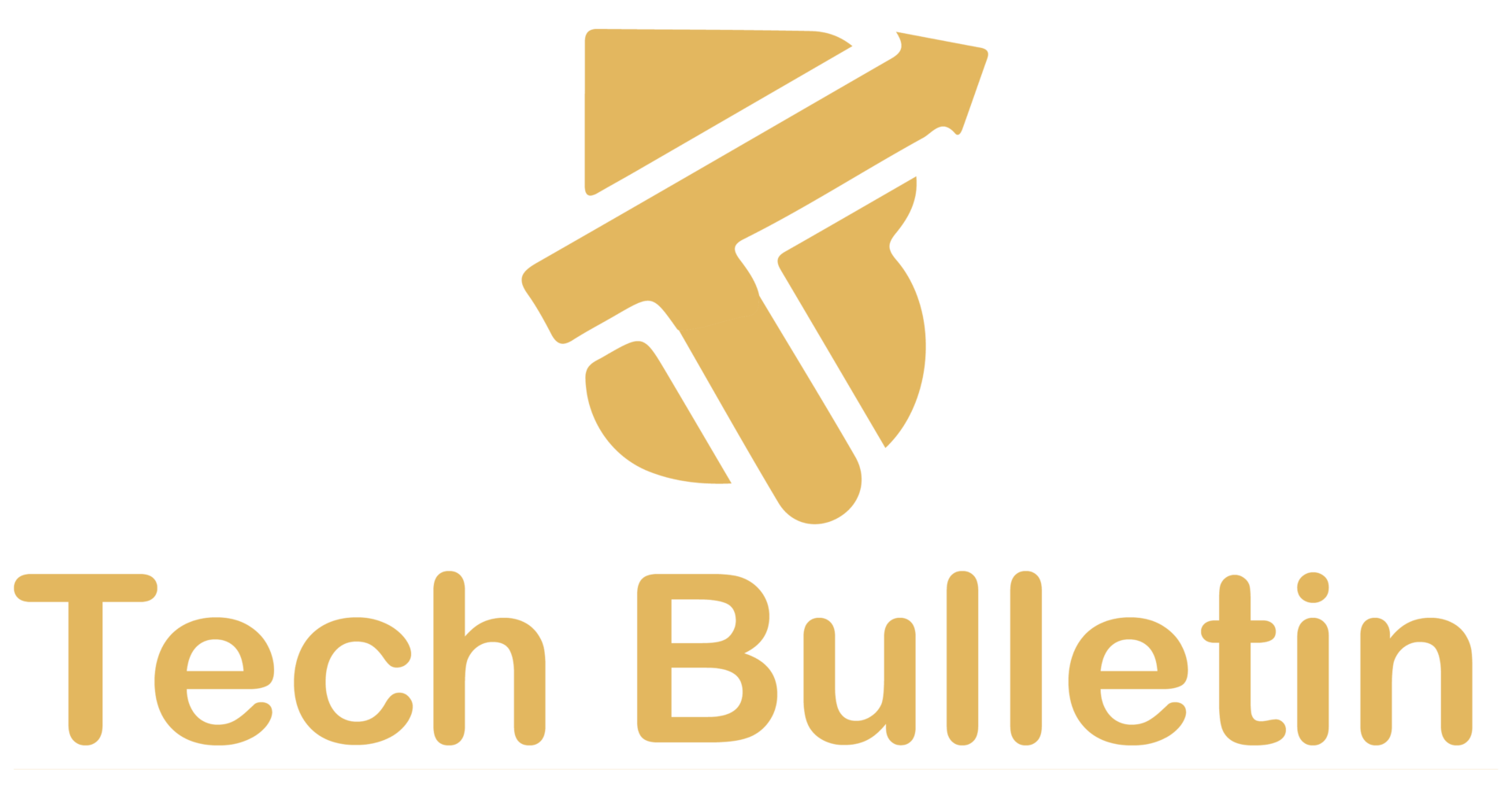Robotic Process Automation Use Cases Across Different Industries

Robotic Process Automation, commonly known as RPA, is a transformative technology designed to automate repetitive, rules-based tasks traditionally performed by humans. Think of it as your virtual workforce bots that operate on user interfaces just like a human would, only faster, more accurately, and tirelessly. These bots can log into applications, enter data, calculate, and complete tasks across different systems without the need for deep system integration.
RPA is often confused with traditional automation, but the key difference lies in its flexibility and adaptability. Traditional automation usually involves coding and system-level integration. RPA, on the other hand, mimics human actions at the UI level, meaning it doesn’t need backend modifications. This makes it faster and cheaper to implement.
How Does Robotic Process Automation Differ from Intelligent Automation?
Core Differences Between RPA and Intelligent Automation
It’s easy to lump RPA and Intelligent Automation into the same category, but they serve distinctly different purposes. While RPA automates routine, rules-driven tasks, Intelligent Automation (IA) leverages technologies like artificial intelligence, natural language processing (NLP), and machine learning to handle more complex, judgment-based processes.
Here’s a simple analogy: if RPA is like a highly efficient office assistant that follows instructions to the letter, Intelligent Automation is more like a strategic manager who can make decisions based on evolving data.
Where RPA shines is in handling structured data, for example, spreadsheets, databases, and standardized forms. Intelligent Automation, however, can process unstructured data from emails, social media, or voice inputs and draw meaningful insights from it. RPA is about execution; IA is about thinking and adapting.
Another key distinction is scalability. RPA is often limited by the scope of predefined rules, whereas IA continues to learn and improve over time, making it ideal for dynamic environments.
When to Use RPA vs. Intelligent Automation
So, how do you choose between the two? Use RPA when:
- The process is repetitive and rule-based.
- The input is structured and predictable.
- The task doesn’t require decision-making or cognitive abilities.
Examples include invoice processing, data entry, and system logins.
Use Intelligent Automation when:
- The process involves unstructured data or natural language.
- Decision-making based on variable inputs is required.
- You need to continuously learn and improve task performance.
Examples include chatbots, fraud detection systems, and recommendation engines.
Ultimately, the best strategy is often a hybrid approach using RPA for what it does best, and integrating IA where adaptability and cognition are required.
Basic Components of a Robotic Process Automation (RPA) Implementation
RPA Bots and Their Functions
RPA bots are the core executors in any RPA implementation. These bots are programmed to mimic human interactions with software systems. Depending on the requirement, bots can be:
- Attended Bots: Operate alongside humans and are triggered by user actions.
- Unattended Bots: Operate without human intervention, usually scheduled or event-driven.
- Hybrid Bots: Combine features of both attended and unattended bots.
Bots perform tasks such as opening emails and attachments, logging into web applications, extracting structured data, moving files, and even scraping web data. What makes them powerful is their speed, accuracy, and 24/7 availability.
RPA Platform and Orchestrator
The RPA platform is the ecosystem that supports bot creation, deployment, and monitoring. Most leading RPA platforms come with drag-and-drop visual editors that simplify bot development.
The orchestrator is the command center; it schedules, manages, and monitors all bots across the organization. It ensures tasks are assigned efficiently, errors are logged, and performance metrics are tracked. Without a strong orchestrator, managing dozens or hundreds of bots would be chaos.
Every RPA implementation must prioritize governance and compliance. This includes setting clear roles and responsibilities, access controls, audit trails, and documentation standards.
Why? Even though bots can reduce human errors, they are not immune to misconfiguration or misuse. Moreover, many industries, especially finance and healthcare, are governed by strict regulatory requirements. Ensuring your RPA setup complies with standards like GDPR, HIPAA, or SOX is crucial for avoiding legal pitfalls.
RPA Tools and Platforms in the Market
Top RPA Tools Overview
There’s a diverse range of RPA tools available today, each offering unique features tailored to various use cases. The leading players include:
- UiPath: Known for its user-friendly interface and strong community support.
- Automation Anywhere: Offers both cloud-native and on-premise options.
- Blue Prism: Favored for its enterprise-grade security and scalability.
- Microsoft Power Automate: Integrated deeply with the Microsoft ecosystem.
- Pega: Combines BPM (Business Process Management) with RPA.
These tools support task recording, workflow automation, analytics, and integrations with third-party systems. Choosing the right one depends on your business needs, budget, and technical expertise.
Integration Capabilities and Support
Modern RPA platforms offer APIs and connectors for integration with ERP, CRM, email, databases, and more. This extensibility is crucial for creating seamless, end-to-end automated workflows.
Additionally, look for platforms with strong documentation, training resources, and customer support to ensure a smooth implementation journey.
Which Processes Would Benefit from the Use of Robotic Process Automation?

Characteristics of Ideal RPA Candidates
Not all processes are created equal when it comes to automation. The most suitable processes for RPA typically have the following characteristics:
- Repetitive and Rule-Based: Tasks that are routine and follow a clear set of rules.
- High Volume: The process occurs frequently and consumes significant manpower.
- Standardized Input: Structured data and consistent formats.
- Low Exception Rates: Minimal need for judgment or decision-making.
Examples include invoice processing, data migration, report generation, and user account creation.
Front-office vs. Back-office Automation
RPA has applications in both front and back offices:
- Front-office: Involves customer-facing tasks like service requests, support ticket management, and order processing.
- Back-office: Covers behind-the-scenes operations like payroll, data entry, and reconciliation.
By automating both areas, businesses can ensure seamless operations, enhanced customer experiences, and significant cost reductions.
Case Studies of Beneficial Processes
- A leading bank automated its loan application processing using RPA, cutting processing time by 60%.
- A global retailer deployed bots to manage inventory and orders, improving fulfillment accuracy.
- A healthcare provider’s automated billing and claims processing reduces errors and speeds up reimbursements.
RPA in the Banking and Financial Sector

Loan Processing and KYC Automation
The banking and financial industry is among the earliest adopters of RPA, and for good reason. In a sector where compliance, speed, and accuracy are paramount, RPA offers a powerful solution to traditional bottlenecks. Take loan processing, for instance. Normally, this process involves verifying documents, assessing credit history, and routing files through multiple departments, a task that can take days or even weeks.
With RPA, banks can automate data extraction from documents, cross-check customer data against credit bureau databases, and pre-fill loan forms with zero human intervention. The result? Faster loan approvals and improved customer satisfaction. Bots ensure that no step is skipped, and they do it in a fraction of the time.
Another game-changer in this industry is Know Your Customer (KYC) automation. KYC involves collecting and verifying vast amounts of customer information. RPA bots can gather data from internal systems, third-party databases, and government portals, then compile it into a centralized profile. Not only does this speed up onboarding, but it also helps institutions remain compliant with anti-money laundering regulations.
Fraud Detection and Compliance Reporting
RPA also enhances fraud detection by automating rule-based monitoring tasks. Bots can scan thousands of transactions in real time, flag anomalies, and trigger alerts for human review. This level of real-time oversight is nearly impossible with manual processes, especially considering the volume of transactions processed daily.
Additionally, compliance reporting is a time-consuming yet critical function that benefits immensely from RPA. Bots can gather required data, compile reports in standardized formats, and ensure submissions meet regulatory deadlines. It reduces the risk of penalties while freeing compliance teams to focus on higher-value tasks.
RPA in Healthcare

Patient Data Management
In healthcare, accurate and timely access to patient information can be a matter of life and death. Unfortunately, many healthcare providers still rely on fragmented, manual data entry systems that are error-prone and inefficient. This is where RPA comes to the rescue.
Bots can be deployed to collect patient information from various sources electronic health records (EHRs), insurance databases, and lab systems, then consolidate it into a single patient profile. This eliminates redundant data entry and ensures healthcare professionals have the most up-to-date information at their fingertips.
In addition to enhancing data accuracy, RPA reduces administrative burdens. Nurses and medical staff no longer have to spend hours entering data or navigating between systems, allowing them to focus more on patient care. And since bots work 24/7, there’s less risk of delays in updating critical records.
Billing and Claims Processing
Medical billing is a complex, multi-step process involving patient eligibility verification, coding, claims submission, and reimbursement tracking. Any mistake in this chain can delay payments or even result in denied claims.
RPA can automate the entire billing workflow from verifying insurance eligibility and entering CPT/ICD codes to generating invoices and submitting claims to payers. Bots can even follow up on unpaid claims by checking payer portals and flagging discrepancies.
The impact is substantial: fewer billing errors, faster reimbursements, and improved cash flow. For healthcare organizations facing tight budgets and high demand, these benefits are nothing short of essential.
RPA in Retail and E-commerce

Inventory and Order Management
Retailers, whether physical or online, face enormous pressure to maintain accurate inventory levels and ensure timely order fulfillment. An inventory miscount or a delayed order can lead to customer dissatisfaction and lost sales. Here’s where RPA proves invaluable.
Bots can monitor inventory in real time, automatically updating stock levels across multiple platforms and triggering reorders when thresholds are reached. They can also reconcile discrepancies between physical and recorded inventory, a task that’s tedious and time-consuming if done manually.
For order management, RPA handles everything from order entry and confirmation to invoicing and shipment tracking. It integrates with e-commerce platforms, payment gateways, and logistics providers to create a smooth, automated order lifecycle.
By ensuring inventory accuracy and order fulfillment efficiency, RPA helps retailers keep customers happy and operations cost-effective.
Customer Support Automation
Customer service is a differentiator in the crowded retail space. However, maintaining a responsive, 24/7 support system is resource-intensive. RPA can work alongside chatbots to provide instant responses to common queries order status, return policies, and product details, without human intervention.
Additionally, RPA bots can classify support tickets based on urgency, escalate critical issues, and update CRM systems with relevant customer interactions. This reduces response times and enhances customer satisfaction while allowing human agents to focus on more complex cases.
The result is a hybrid customer support model that is both cost-efficient and scalable, ideal for high-volume retail environments.
RPA in Manufacturing

Supply Chain and Inventory Control
Manufacturing thrives on precision and timing. A delay in material supply or a misstep in production scheduling can have ripple effects throughout the supply chain. RPA addresses these challenges by automating routine supply chain tasks like procurement, order tracking, and vendor communication.
For example, RPA bots can automatically generate purchase orders when inventory levels drop, confirm delivery dates with suppliers, and update ERP systems with real-time data. This level of automation ensures that manufacturers are always in sync with their supply needs.
Inventory control also benefits from RPA. Bots can conduct virtual audits by cross-referencing stock records with actual usage, helping manufacturers avoid stockouts or overstocking. When integrated with predictive analytics, this automation leads to smarter, data-driven supply chain decisions.
Quality Assurance and Reporting
Quality assurance is another critical area where RPA makes a difference. Bots can automatically log test results, compare outputs to quality standards, and flag deviations for review. They can also generate reports for compliance audits or internal review with minimal manual input.
This not only ensures consistent quality but also reduces the administrative overhead associated with compliance documentation, a win-win for both production efficiency and regulatory adherence.
RPA in Human Resources

Recruitment and Onboarding
HR departments are often bogged down with repetitive tasks like resume screening, candidate communication, and employee onboarding. RPA transforms these tasks into automated workflows that free HR professionals to focus on strategic initiatives.
For recruitment, bots can scan resumes for relevant keywords, shortlist candidates, and even schedule interviews automatically. This reduces time-to-hire and ensures a better candidate experience.
Onboarding involves multiple touchpoints, document collection, system access setup, training schedules, and RPA can streamline it all. New hires receive timely emails, credentials are automatically provisioned, and welcome kits are tracked with zero human effort. The result is a seamless, efficient onboarding process that sets the tone for employee engagement.
Payroll and Benefits Administration
Managing payroll is complex and error-sensitive. It requires handling attendance data, leave balances, tax calculations, and compliance with labor laws. RPA bots can integrate with time-tracking systems, calculate pay, and disburse salaries accurately.
For benefits administration, bots can handle enrollment, eligibility checks, and policy updates. They can even respond to employee queries related to benefits by pulling information from HR databases.
By automating these routine but essential tasks, HR departments can enhance employee satisfaction and ensure compliance, all while reducing administrative costs.
RPA in Telecommunications

Customer Onboarding and Service Requests
The telecom industry operates on massive volumes of customer transactions daily from new activations to plan upgrades and service terminations. Traditionally, this requires substantial manual input, which often leads to delays and errors. Robotic Process Automation revolutionizes this by automating the entire customer onboarding journey.
With RPA, telecom providers can automate SIM card activation, account creation, and documentation verification. Bots collect customer data from forms, validate it against government databases, and update CRM systems all in real time. This slashes onboarding time from days to minutes, ensuring a smooth customer experience.
Additionally, RPA handles service requests such as plan changes, add-ons, or device upgrades. Bots scan the request, apply changes in the backend systems, send confirmation messages, and update billing accordingly. This ensures faster response times and fewer errors, boosting customer satisfaction.
Billing and Usage Monitoring
Billing in telecommunications is complex due to diverse service plans, real-time usage monitoring, and region-specific tax calculations. RPA bots can process and reconcile large volumes of usage data, calculate bills, and apply promotional discounts based on predefined rules.
Moreover, bots can proactively monitor usage patterns and alert customers about nearing data limits, preventing bill shocks and improving customer retention. They can also manage bill disputes by comparing usage records with the billing system and triggering refunds or adjustments as needed.
With RPA, telecom companies can deliver accurate bills, reduce disputes, and strengthen their financial controls, all while operating at scale.
RPA in Government and Public Sector
Citizen Services and Document Processing
Government agencies are often plagued by bureaucratic red tape and outdated systems that slow down public service delivery. Robotic Process Automation has emerged as a lifeline to modernize these functions.
Consider services like issuing licenses, passports, or social security numbers. These involve multiple steps document verification, background checks, data entry, and approval workflows. RPA bots can automate each of these stages, drastically reducing turnaround times.
Bots can scan submitted documents, extract relevant data using OCR (Optical Character Recognition), validate it across government databases, and update central records—all without human intervention. This not only speeds up service delivery but also enhances accuracy and transparency.
Public sector agencies are now using RPA to improve citizen interactions, cut administrative costs, and eliminate long queues at service counters.
Tax Filing and Compliance
Tax authorities worldwide are embracing RPA to manage the heavy load of processing tax returns, validating deductions, and ensuring timely compliance. Bots can automatically extract data from submissions, cross-check it with payroll or transaction data, and flag inconsistencies.
For businesses, RPA automates the filing of tax returns, ensuring adherence to ever-changing tax laws. It also tracks due dates, generates alerts for pending filings, and compiles audit-ready reports.
By automating tax processes, governments ensure better compliance, reduce errors, and make the system more taxpayer-friendly.
Challenges in Implementing RPA
Common Pitfalls and How to Avoid Them
While RPA brings transformative benefits, its implementation is not without challenges. One common pitfall is automating broken or inefficient processes. If a workflow is fundamentally flawed, RPA will only replicate those flaws faster. Hence, process optimization must precede automation.
Another issue is poor stakeholder alignment. Without clear ownership and collaboration between IT and business units, RPA projects often stall or underdeliver. Establishing a cross-functional RPA governance team is essential.
Additionally, overestimating RPA capabilities can be risky. RPA excels in rule-based tasks, but when exceptions arise, like dealing with unstructured data or unpredictable inputs, bots may fail. This is why realistic expectations and scope definitions are critical.
To avoid these pitfalls:
- Conduct thorough process assessments.
- Engage stakeholders early.
- Choose the right processes and tools.
- Start small, scale gradually.
- Invest in training and change management.
Change Management and Employee Training
One of the biggest roadblocks to successful RPA deployment is resistance from employees who fear job losses. Transparent communication about RPA’s role as an enabler, not a replacement, is crucial.
Change management strategies should include workshops, stakeholder meetings, and hands-on training sessions to help staff adapt. Employees must be equipped not just to work with bots, but to supervise, optimize, and even help build automation workflows.
Upskilling your workforce to collaborate with digital workers can transform resistance into enthusiasm, driving RPA success across the board.
Conclusion
Robotic Process Automation is no longer a niche technology; it’s a critical enabler of digital transformation across industries. From banking to healthcare, manufacturing to public services, RPA is delivering unmatched value by automating routine tasks, reducing errors, and freeing up human talent for higher-order thinking.
While challenges in implementation exist, the benefits of RPA improved efficiency, lower costs, enhanced compliance, and better customer experienc,e far outweigh the risks. With Intelligent Automation on the horizon, the future of work is not just automated but intelligent, collaborative, and profoundly human-centric.
FAQs
What industries benefit the most from RPA?
Banking, healthcare, telecom, retail, and manufacturing are among the top industries benefiting from RPA due to their high volume of repetitive, rule-based tasks.
Can RPA be combined with AI technologies?
Yes, combining RPA with AI results in Intelligent Automation, which allows bots to handle unstructured data, make decisions, and continuously learn and improve.
Is RPA suitable for small businesses?
Absolutely. Many RPA tools offer scalable solutions that cater to the needs and budgets of small and medium-sized enterprises.
How secure is RPA implementation?
RPA can be highly secure when implemented with proper access controls, encryption, and compliance with regulatory standards like GDPR and HIPAA.
What is the ROI of implementing RPA?
Organizations can expect a return on investment within 6 to 12 months, with some processes delivering up to 80% cost savings and significant productivity gains.






